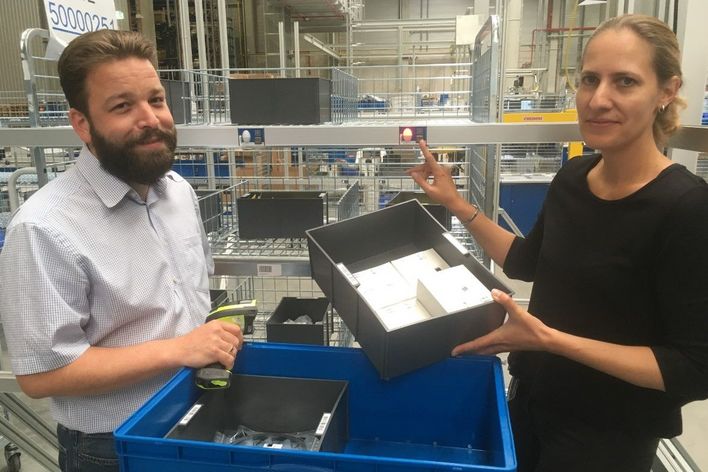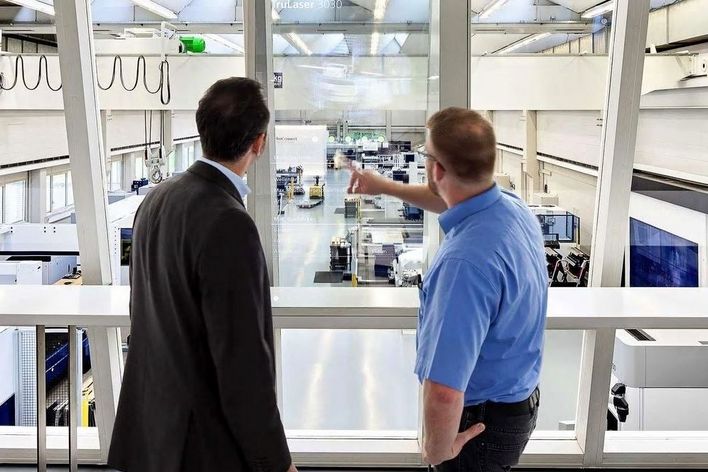Establish order: Lean management works anywhere
An efficient hall layout ensures an optimum process flow. Lean management means designing processes in such a way that they can be as low waste as possible. This required shortening paths and eliminating search times. This is best achieved if the machines in your production are arranged to suit the process, as an optimum process flow saves time and makes your production more efficient immediately.
Unleash potential: Satisfied employees work more productively
Learn from the greats and implement lean management methods like 5S in your production. 5S means, for example, designing workstations so that work can be carried out without any interference. Unnecessary searching is also to be avoided here and work is to be carried out in a low-waste manner, as far as possible. The basis for this is a clean and orderly work environment in which employees feel more comfortable. This increases the productivity of your employees and has a positive effect in terms of quality and quantity on the result of your processes, which makes your customers even more satisfied.
React faster: Automated calculation saves time
If you no longer have to use the time-consuming method of making a calculation in Excel, that saves a huge amount of time. There are programs that can calculate in a partially automated manner, create multiple proposals, and generate offers automatically at the click of a mouse. This can all be carried out online as well. The benefit to you is that you can rely on standardized error-free offers. Access to earlier offer versions for similar or the same orders also speeds up your response capacity during offer preparation. The benefit to your customers is that the waiting time for a qualified offer is shortened, which also increases the chances of them placing an order with you.
Clever design: Save process steps during component design
Habitual thinking is convenient. But sometimes it can save a lot of time if you try to rethink things during the component design. Is a weld seam necessary or can it be replaced by an additional bend, for example? With a new component design, you can often save on process steps and additional coordination outlay as well as optimize your component at the same where possible. Look at your part range and try to view it with fresh eyes.
Save paper: Changing from one media to another can be a source of mistakes and very time consuming
Do you work with printed drawings, Excels, and ERP? Try to only transfer important data such as CAD drawings or work papers digitally from workstation to workstation. This prevents, amongst other things, time spent searching in stacks of paper that run through your production and also prevents obsolete drawing versions from being in circulation.
Anticipatory planning: Production management can be really easy
You don't have to completely network your production – sometimes it helps to rethink things a bit in order to increase efficiency when it comes to production management. Where possible, do you want to use your machines to capacity at all times? This is understandable. However, always make sure to check how the utilization of a process could affect further process steps. For example, nest and prioritize your parts to be cut according to the due date for delivery and not just according to the appropriate sheet thickness; you can thereby avoid capacity bottlenecks that result in a mad rush. Positive side effect: You reduce stock and long waiting times in your production and therefore reduce throughput times and increase your flexibility. With this "bottleneck-oriented" production planning, you can bring some calm into your production and increase both your productivity and your delivery reliability.





